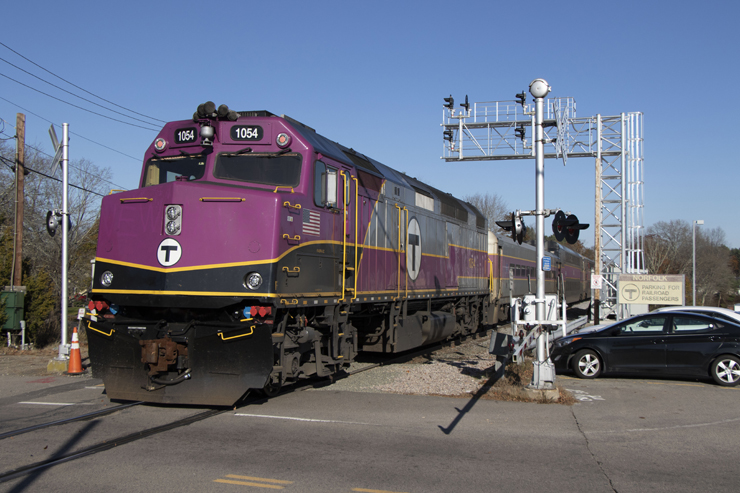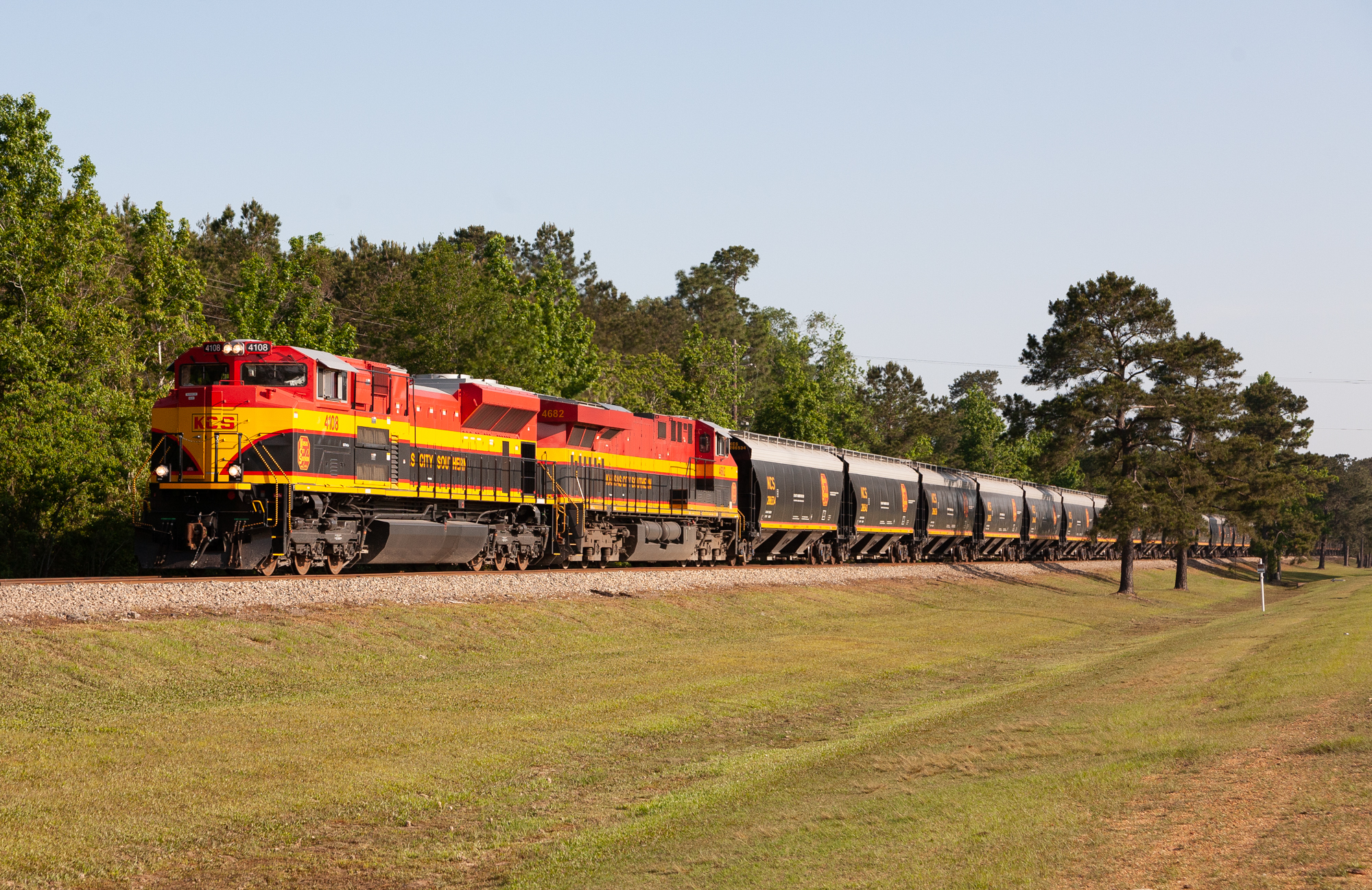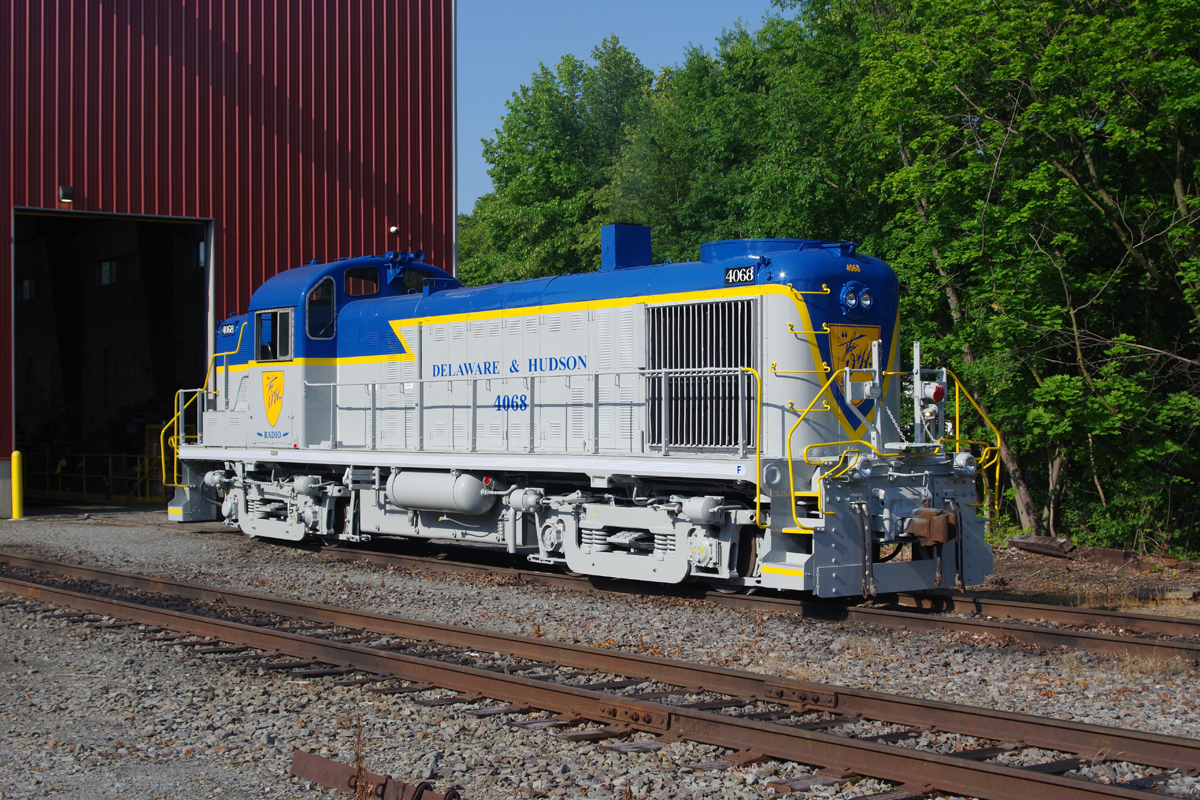
BOSTON — Bills have been introduced in both houses of the Massachusetts legislature that would require electrification of Massachusetts Bay Transportation Authority commuter rail lines by the end of 2035, the Boston Herald reports.
The bills include an ambitious goal of electrifying by Dec. 31, 2024, three segments that serve what are defined as environmental justice populations — the Newburyport/Rockport line between North Station and Beverly; the Fairmount line from South Station to Readville; and the entire Providence/Stoughton line.
Those same three lines were given electrification priority when the MBTA’s former oversight body, the Fiscal and Management Control Board, voted for an electrification plan in 2019 [see “MBTA board votes for electrification …,” Trains News Wire, Nov. 5, 2019]. That plan has mostly been forgotten in the wake of the COVID-19 pandemic and major issues with the MBTA’s rapid-transit-operations.
The newspaper quotes state Sen. Brendan Crighton, who filed his house’s version of the proposed bill, as saying “I think we need to meet this urgency. We need to get moving on this as quickly as possible. We can no longer afford to wait.” He noted the availability of federal funding under the Bipartisan Infrastructure bill and the state’s new governor, Maura Healey.
A spokeswoman for Healey noted the governor has “called for electrifying public transportation so that all modes operate on 100% clean power by 2040” and said Healey “will review any legislation that reaches her desk.”














Only one line left into London that’s not electrified. None into Paris. None into Berlin. Scotland’s government has FIVE Edinburgh -Glasgow routes. All electrified. Scotland is pushing ahead. England is start-stop, the expensive way.
Switzerland had a 20-year complete electrification programme from 1919 after problems importing coal during the Great war. Completed just in time!!
There are many reasons to electrify. Air quality. Sustainability. Cleanliness. Oil is cheap only for now.
UK diesel cars (the majority vs. petrol) ran on predominantly Russian diesel. Until recently…….
This legislation is a lie, a sham, and a charade. MassDOT and its political enablers are at this moment facing a transportation trifecta of messes. The production of Red and Orange Line cars at CRRC Springfield has stopped due to disgraceful management practices and now we’ve learned that the suppliers have stopped delivering because CRRC is not paying its bills. And the federal government has given the state the middle fingered salute for funding replacements of the deficient and decades old Bourne and Sagamore Bridges and the MassPike relocation in Allston. And in the face of all that the luminaries in the legislature are mandating electrification of the Commuter Rail?!?! Clearly not a one of them has a clue as to what that entails. And I suspect not a one of them has ever ridden a passenger train for a legit transportation purpose. All this is is sleazy, slimy political posturing.
You can legislate the electrification, but are they going to pay for it. Figure most will come from the Federal Government (by taxpayers mostly from flyover country). Not being a design engineer , the cost estimate would be at least $10 million a mile (electrical overhead lines, signaling, & locomotives. Easily over $ 2 billion to do job. Throw in government mismanagement, graft, inflation, and the like; cost would be more like $5-6 billion. And I’m probably way under the true cost. Just look at California High Speed Rail project.
Mass sends far more tax money to “fly over country” than it gets from the Feds. Stop the lies.
These legislators may pass this mandate law, but then most of them will soon run for reelection. Will they mention the “need” to raise taxes in order to pay for this mandate they created? Probably not. Will the voters connect the dots? TBD.
Electrification represents a HUGE capital expense. Diesel-electric means the engine hauls around it s own power plant with no need for a fixed distribution system. Europe’s shorter distances and higher densities tell in expense and they started electrifying before the advent of the Diesel. In the US RR electrification tended to get studied to death; many roads DID consider it in the 1920’s after the PRR showed the successes possible for AC after the NYNH&H had shown the problems. But other than a few tunnel electrifications and some heavy commuter operations (DL&W, RDG, & IC mostly) that was it. Oh, electrification was considered again after WW2 but the money went into Diselization which could be used everywhere–more bang for the buck as they probably said at the time! But by 2035? A pipe dream! Now in Mass.–anyone can propose a law which the legislature MUST consider somehow (the only remaning state with such a procedure!) but such “laws” are filed as “by request”–which tells the relevant committee what to do. I wanted to file a bill to ban ICE vehicles from the Harvard trolley tunnel but such a bill would have gone nowhere!
Electrifying the B&P would require only the MU’s or electrics for hauling coach trains. Amtrak says substations are needed; I am suspicious of the amount of traffic AMTK has in and out of Boston as in it’s stagnant if not dropping. The Stoughton Branch would require catenary. But with the MBTA’s just acquiring more coaches and engines there is depreciation expense to be run out. You don’t want to waste money as in the old MTA’s converting the East Boston operation to trolleycoach only to abandon it nine years later for bustitution; the record is for the 5-6 year life of the Arborway trolleycoaches. If the point is to spend money–go ahead an waste it! When I moved to Medford in 2007 the Southern Div. (OK, Lowell Line!) had the same signal set-up I remembered from 1973! Then within a few years they put in a new one. Then they put in yet another new one with signals in yet other new locations; now there is yet another one. THREE new signal systems within 16 years! $$$$$ spent.
Reminds me of GOTransit; they’ve had plans to electrify their busiest commuter districts for about ten years, still haven’t broken ground. Mostly money issues.
electrifying an entire commuter railroad is impossible the mbta commuter rail should stick with rebuilt diesel locomotives since they aren’t polluting much of the air
Do we have any idea of how many track miles of each route would be involved to install CAT? From today it is 23 months to the end of 2024. IMOit will be near impossible to acquire, install, test, & certify for operation of the needed transformers . Amtrak has even stated that it will need another substation for MBTA service on NEC PVD BOS. Much less the power needed on the Fairmont line.
Foxborough trains have been running as a pilot since October 2019 (with a COVID related hiatus from Nov. 2020 to May 2022). 10 1/2 round trips serve Foxborough/Gillette Stadium each weekday.
Thanks. Didn’t know.
In other words, Foxborough/ Gillette Stadium is one huge Park-Ride, whereas parking at nearby Mansfield on NEC/ Providence Line is an experience best avoided. Takes only 12 minutes longer on the Foxborough line than on NEC. (Or 24 minutes longer R/T.) Also I assume that at Foxborough/ Gillette one doesn’t have to cross the under the tracks (AM or PM, one of those) to get to one’s car. I haven’t been there but I assume Foxborough/ Gillette is a single platform for both outbound and inbound.
Any figures on ridership? OK, I was assigned to go out and count the first day back in 2019. This service is in the schedules so it must be running BUT–studying the schedules the T is missing markets. When first started I noted FIVE riders on the second outbound train which in those days went out the Fairmont Line. Should be lots of jobs at the medical facilities close to the station yet the latest schedules don’t encourage any reverse commuting or later in the day shopping. NOTE for mileage collectors: you NEED that connecting track at Walpole, a long-legged wye with its own grade crossing!
Where even to begin? Electric power is an efficient way to move high volumes of traffic as it provides for rapid acceleration. There is no evidence it’s any cleaner or better for the environment than diesel or provides “environmental justice”. The return on investment is non-existent for lines with less than high density.
I would ask this of the General Court: If electrical power is so good, how is it that MBTA has operated diesels in the two decades that NEC Providence Line has been electrified? MBTA can’t afford electric locomotives even where the wires are in place.
I can see why elelctrification would be wise on the Stoughton line as its trains continue on NEC for most of the overall run, inclduing through Boston’s lower-income districts. (Thus the “environmental jusrice.”) However as I have posted, MBTA runs diesels on NEC. HOWEVER, so do other branches: Needham, Franklin and the proposed (but never implemented due to COVID) Foxborough route.
My opinion of the Democrat Party sinks with each passing week. These people can’t make a go of MBTA, can’t keep MBTA’s balance sheet above water, can’t fill the seats, can’t buy subway trains that actually function, but they demands tens of billions of dollars of additional expenditures for no return.
A final note: What good is electrification to Beverly? It’s not the end of the line. From Beverly trains continue east toGloucester and Rockport; or north to Ipswich and Newburyport. What are these fools proposing? Changing the locomotive at Beverly on every train? Or buying dual-mode locos.
Sorry, Charles. I meant to respond to your post Re: Foxborough. See my comment above.
The problem is that American railroading as an industry hates electrification at a cultural level, its foreign to them and a massive capitol expense, so they find excuses for what they know, which is diesels. Most, if not all, of the busy commuter lines into London, Paris, Tokyo, Seoul, and many smaller cities like Berlin, Stockholm, Sapporo, Lyon, etc… are electrified. Most of the diesels you see are regional services in the rural countryside, or in the case of London, semi-intercity services that travel beyond electrified tracks.
However, given that the MBTA has all sorts of problems and can’t even run electric trains on tracks already electrified, one questions if they have the competence to electrify if given the money. What they should probably do is hire in-house a lot of Europeans to lead and manage the agency through this major infrastructure investment and service improvement. They should closely examine Caltrains and Toronto GO to avoid the pitfalls that they have run into with their electrication programs.
How is it that MBTA has operated diesels in the two decades that NEC Providence Line has been electrified? Great question! And one that should have been answered 20 years ago. Why they would chose to operate diesels, which pollute immediate air quality, when electric catenary is already in place, I do not understand. Worldwide, electric trains are widely utilized in regional rail. I guess this is just another piece of ‘American Exceptionalism’ where we are too cheap to make the smarter decision.